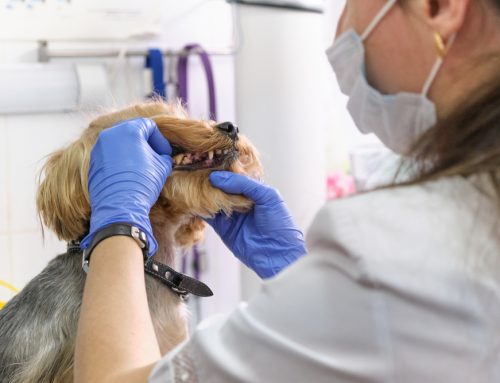Spring weather is in full swing, which means the joys of summer are only weeks away. If you are like us, you love spending the dog days of summer outdoors with your pets. Whether you prefer swimming at Alum Creek Lake, walking along the Hoover reservoir, or romping in the backyard, fun-in-the-sun opportunities are endless. But, while we strongly encourage you to get outside with your pet, our goal at Westerville Veterinary Clinic is to keep your furry friends safe and healthy. Follow these five tips this season, to help prevent common pet injuries we see in the summer months.
#1: Check the forecast
Knowing what the weather has in store is essential when planning an outdoor day with your pet. If the weatherman calls for a super hot and sunny day, you should forgo your plans for a midday hike with your bulldog. Are thunderstorms a possibility? Ditch your plans for a picnic in the park with your skittish chihuahua. Pay particular attention to the temperature, as heat-related injuries are common in pets. For example, heat exhaustion, which can lead to heatstroke, frequently occurs, especially in flat-faced breeds such as pugs, boxers, Shih Tzus, and Persian cats.
But, while soaring temps definitely warrant caution, high humidity can cause pets to overheat faster. Since most animals don’t have sweat glands, they must find other ways to dissipate heat, such as panting to evaporate moisture. When the water content in the air is already saturated, this makes evaporation more difficult, leading more quickly to heat exhaustion.
#2: Stay out of the sun
Keeping pets in shaded areas is wise, not only to prevent overheating but also to protect their skin. Believe it or not, animals can suffer sunburn, too. Also known as solar dermatitis, pet sunburns are not only painful, but can also lead to serious skin lesions and, rarely, cancer. Your pet’s naturally hairless areas, such as the nose, flank, inguinal, and axillary areas, are more susceptible to solar dermatitis. We see sunburns more commonly in light-colored, short-haired breeds, such as pit bull terriers, dalmatians, boxers, and American bulldogs, but sunburn can potentially affect any pet. Always provide a shaded area for your furry friends, remembering that these areas may change throughout the day with the sun’s path. If avoiding the sun is not feasible, consider purchasing a sunscreen for your pet. Generally, any sunscreen that is labeled as safe for babies is a good choice, but we recommend avoiding products containing zinc oxide, because of the risk for zinc toxicity with ingestion.
#3: Never leave your pet unattended in a hot car
This should go without saying—leaving a pet in a car in warm weather is simply never acceptable. While it may feel breezy and cool to you, the interior of a car can reach upward of 100 degrees in only 20 minutes on a mild, 70-degree day. Contrary to popular belief, cracking the windows will not provide sufficient airflow for your pet, so this must not be considered a suitable alternative. Opening the windows fully puts your pet at risk for escape. If you absolutely must travel with your pet and make a pit stop, travel with another person who can safely watch them. Otherwise, leave your furry friends at home whenever possible.
#4: Do the palm test
If you’ve ever walked barefoot on asphalt on a hot summer day, you can probably recall the unique, unpleasant burning sensation. In fact, most of us avoid this at all costs by wearing shoes. Did you ever consider that our pets can have the same experience? Despite how hardy their little paw pads look, animals can suffer burns, if forced to walk on hot pavement. To prevent this painful injury, do the palm test. Hold the palm of your hand over the surface in question for 10 seconds. If it is too hot for your hand, it is too hot for your pet’s paws. Consider a more shady route, or buy your pet a set of booties, if these hot surfaces are frequently unavoidable.
#5: Always have a plan

No matter the activity, ensure you are prepared with everything you need to keep your pet safe. If your pet will be off-leash, consider microchipping, and always keep your pet’s identification tags up to date. If you’re heading to the beach, watch your pet for saltwater intake, and ensure plenty of fresh drinking water is always on hand for all people and pets. Other items to consider packing include an umbrella for shade, portable bowls for water, sunscreen, and veterinary emergency contact information, especially if you’ll be off the grid.
Here at Westerville Veterinary Clinic, we are dedicated to the health and safety of your pets. If you are concerned about a heat-related injury in your pet, contact us for guidance.







Leave A Comment